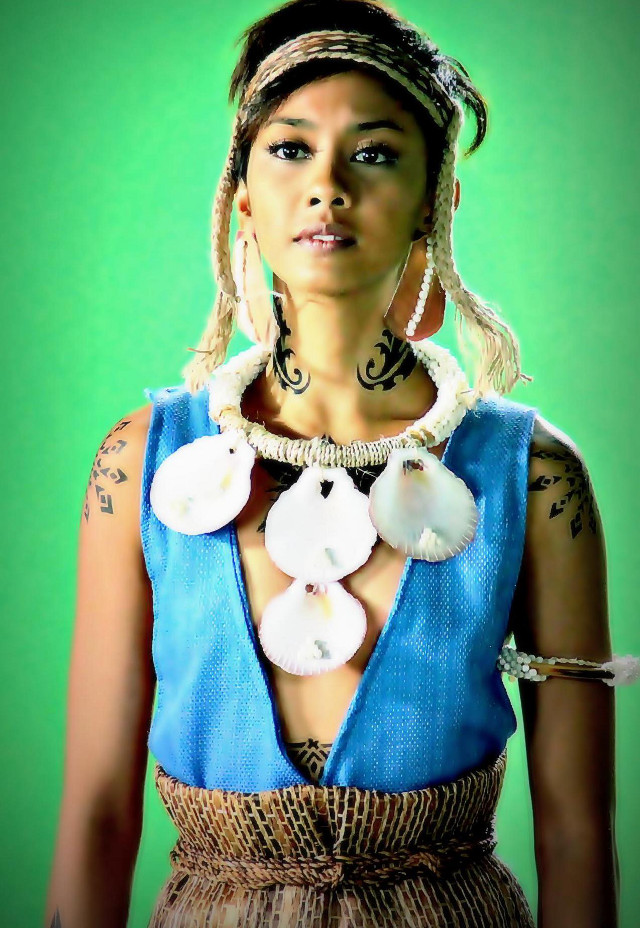SUMMARY
This is AI generated summarization, which may have errors. For context, always refer to the full article.

MANILA, Philippines – There is much promise in Daragang Magayon: Ang Istorya ni Mayon.
First, it is a welcome addition to the showcase of local Bicol-inspired works scheduled for National Arts Month 2013.
Second, it offers a rich feminist text surrounding the story of a heroine whose bravery and love are ensconced in the most famous of Bicol legends.
Third, it springs from the strength of collaborative potential, tapping the likes of National Artist Rio Alma’s poetry, the music of ethnomusicologist Ramon Santos, and the interface of dance, film, and animation.
Fourth, the production is backed by the solid support of Albay Governor Joey Salceda and Bicol University.
But the choreography was found wanting in executing the richly-nuanced narrative of the beautiful maiden who, as legend has it, tragically turned into the shapely Mayon Volcano. The two-hour-long dance has proved to be a dragging production with a deeply foreboding mood. The dance steps, though clearly contemporary with inspiration from earth-bound indigenous movements, were tediously repetitive and lacked inventiveness.
I say this having seen much of Asian-inspired contemporary choreography. I would say that the over-all direction could have used more pithy structure, given that the performance is an enterprising confluence of the various arts from different disciplines. The sheer long-windedness of the two-act piece dampened an otherwise powerful story.
This recent production performed on February 8 at the CCP Main Theater paled especially in comparison to an earlier version of Daragang Magayon, a choreographic multimedia rendition led by Hazel Sabas-Grower, which was beautifully experimental, minimalist, intimate, focused, and lyrical.
Sabas-Grower only employed two dancers in the 29-minute piece, with music also by Ramon Santos, and compelling poetry by Merlinda Bobis, recited by vocal artists from the UP College of Music. The production simply used terse rope ladders shaped like a triangle to reinforce the image of the volcano, around which the two dancers executed their conversational and shifting movements.
But each choreographer has her or his own style. The brainchild of this 2013 multimedia Daragang Magayon is E-Dance Theater artistic director and choreographer Gerald Mercado, and its project director is Katrina Santos-Mercado.
A former Ballet Philippines dancer, Mercado has bravely set-up a contemporary ensemble of dancers in his studio in Pasig City. His wife and creative partner Katrina Mercado is herself a seasoned ballet dancer previously from Dance Theater Philippines, Philippine Ballet Theater, and Ballet Philippines. E-Dance Theater has had several productions — equally collaborative — under its belt, and Daragang Magayon: Ang Istorya ni Mayon would be its biggest project so far.
While Mercado is to be congratulated for attempting a large-scale collaborative artistic event (indeed a good exposure for his young group of dancers and a conscientious move to give another life to the legend from his native province), we should say that the dance could have used more techincal polishing and a tighter libretto. There is something problematic about stretching a potentially powerful choreographic narrative into a 120-minute-long performance filled with repeated movements that focused on pathos, interpreted by dancers who still lacked proficiency in the craft.
It was a good idea, however, to employ guest artists Ea Torrado (as Magayon) and Victor Maguad (as Ulap), effusively portraying the star-crossed protagonists of the story. Both dancers are guest artists and independent dance practitioners, and they made the most with their emotive acting and expressive dancing out of their respective pieces in the dance-story. Torrado and Maguad’s pas de deux had elaborately impassioned moments.
The warriors portrayed by Francis Cascano (as Pagtuga) and Roduardo Ma (as Linog) also had superb presence and agility. But then the performers can only do so much given the prescribed structure and movements to work with. The Rawis folk people, which formed the corps of the dance, gave their utmost best, but one can sense that they needed more refinement in technique, and perhaps the maturity that comes with time and experience on stage.
The use of film, directed by Chuck Escasa and animation by Niko Salazar, was something one would eagerly look forward to, what with the surge in the production of short dance films in recent times. But the filmic sortie fell short of what one might expect. A few of the short films were seamlessly incorporated in the story, but most seemed to be unclear and quick interludes that did not make sense, much less enhance an otherwise interesting interface with new media.
And while Ramon Santos’ music is hugely experimental – using rondalla, gongs, guitar, piano, and vocals – what stood out was the lack of an epigrammatic and cogent choreography and direction to give justice to the maestro’s music.
The set design by Leo Abaya is interesting as it adopted the culture of the locale it was based: made-up trunks of coconut trees framed the stage, in the middle of which is a circular, gaping hole, reminiscent of the volcano’s orifice. White transluscent cloths frame the top and right side of the stage, as if clouds gracefully hovering above the majestic Mayon.
There are lessons to learn from the story of Daragang Magayon, especially for this generation that is hardly aware of our local myths and legends.
At the very least, the production team should be lauded for taking off from a much-loved indigenous tale amidst the massive Hollywood-ification and Disney-fication of our culture in contemporary times.
Otherwise, Mayon’s story remains a promise unfulfilled. – Rappler.com
(Rina Angela Corpus is an assistant professor of Art Studies at the College of Arts and Letters, University of the Philippines. She survived Sandy while on special detail in New York in October 2012. She practices the healing arts of shibashi-chigong and Raja Yoga meditation. Her poems have been featured in Mad Swirl, Philippine Collegian, Philippines Free Press, and Tayo Literary Magazine.)
Add a comment
How does this make you feel?
There are no comments yet. Add your comment to start the conversation.